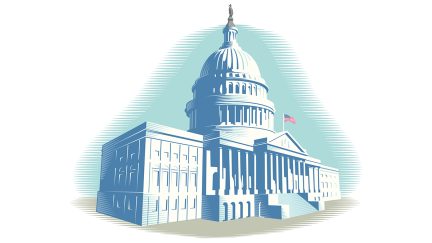Never miss a story — sign up for PLANADVISER newsletters to keep up on the latest retirement plan adviser news.
Roth in Reality
Plan advisers and sponsors facing implementation of new rules outlined in the SECURE 2.0 Act of 2022 are up for a challenge— and experts say they’ll need further guidance from the IRS to make the Roth provisions a reality.
The federal retirement legislation made post-tax contributions to retirement plans more prevalent with two changes: As of 2024, employers can make matching contributions directly to Roth 401(k)s, and starting in 2026, high-income earners must make catch-up contributions Roth-based.
These Roth provisions are a top focus for plan advisers, from Cogent Syndicated and Escalent. But experts say the IRS hasn’t yet provided enough information for the industry to fully put these provisions into practice.
“There is a lot [unknown] in terms of determination, taxation and operationally how it’s going to go,” said Alison Cohen, an ERISA attorney and partner with Ferenczy Benefits Law Center.
Challenges in Implementation
Because there hasn’t been a lot of demand for the option to have employers make Roth contributions to retirement savings plans—and because the Roth catch-up provision requirement was pushed back from 2024 to 2026—there hasn’t been much implementation yet, said Steven Grieb, senior compliance counsel for Gallagher.
But before the delay to 2026, there was a lot of finger-pointing, and that’s still the major hurdle Grieb expects the industry to face regarding these provisions.
“Recordkeepers were saying ‘no, this isn’t our job, this is your payroll provider’s job,’ and payroll providers were saying ‘we can’t implement this, you have to talk to your recordkeeper,’” Grieb said. “No one was really stepping up to the plate.”
Because he can’t imagine the IRS will specify who is responsible, Grieb said his primary concern is that once guidance comes from the IRS, there’s going to be more finger-pointing and the industry will still be “running in circles” in 2025.
If responsibility does fall to the payroll companies, that could put smaller payroll companies and their customers at a disadvantage, said Sean Menickella, managing director at Beacon Financial Services. Local payroll providers may not have the infrastructure of firms like ADP, Paychex and Paylocity, and that could force plan sponsors to feel like they need to audit the work of payroll companies or not give the option to have employers make matching contributions directly to Roth 401(k)s at all.
“If it causes more work, more liability and a greater headache for the employers, are they really going to implement it even if it’s a benefit to the employees?” Menickella said.
Susan Shoemaker, principal at CAPTRUST, foresees headaches related to the administration of designating employer contributions as Roth. There are already so many moving parts when it comes to how plan sponsors and payroll work together, and with adding this option for employers to make Roth contributions, “There are a lot of errors that could happen that we’re not aware of yet.”
Another challenge Shoemaker points to is educating plan participants. For example, higher earners may have never had Roth accounts before and now they’ll have to make Roth catch-up contributions. They may not be aware of Roth rules like that an account needs to be open for five years to not trigger a taxable event when withdrawing earnings, Shoemaker said.
Plans will also need to communicate the significance of having employers make Roth contributions, including that the move could put the participant in another tax bracket since they’re making pre-tax money after-tax and they’ll have to pay taxes outside of the plan, Shoemaker adds.
IRS Guidance Needed
The IRS’ guidance on the Roth provisions has been sparse, leaving questions for plan sponsors, advisers and recordkeepers. For instance, if payroll companies need to hit certain triggers in order to implement the Roth catch-up contributions, how will they know when to do so? It’s unclear, Cohen said.
The same goes for how exactly someone will be classified as “higher earning” and, therefore, need to make catch-up contributions after-tax. SECURE 2.0 says that any participant who earns more than $145,000 in FICA wages will need to make catch-up contributions as Roth contributions, but it’s not clear if that includes self-employed and government workers who don’t get FICA wages, Cohen said.
There are also mechanical questions for recordkeepers and third-party administrators who conduct actual deferral percentage (ADP) nondiscrimination tests to ensure higher-paid employees aren’t getting unfair advantages in the plan. If a highly compensated employees’ contributions fail testing and need to be re-classified as catch-up contributions, additional paperwork will need to be issued since that contribution will now need to be Roth. If the testing is happening late, participants may need to file amended tax returns, Cohen pointed out.
There’s also concern about the possibility of a universal availability problem when it comes to Roth catch-up contributions, Cohen said. If a plan doesn’t provide for Roth, but now catch-up contributions for highly compensated employees must be Roth, there’s the possibility that plans won’t allow these individuals to make catch-up contributions. There’s also the possibility that plans will allow highly compensated employees to make catch-ups Roth, but no one else.
Can plans determine that all catch-up contributions have to be Roth, even if you made less than $145,000 last year? Grieb said it’s another unknown.
When it comes to employers being able to make Roth contributions, Cohen said that the mechanics of trying to make those contributions go into the employees’ accounts as Roth also need to be ironed out with guidance from the government.
The IRS has indicated that more guidance is on the way, but experts are hoping it comes in time to avoid a last-minute scramble.
You Might Also Like:

403(b) Plans Have Special Considerations When Complying with SECURE 2.0

Answering Questions About SECURE 2.0 Catch-Up Provisions



